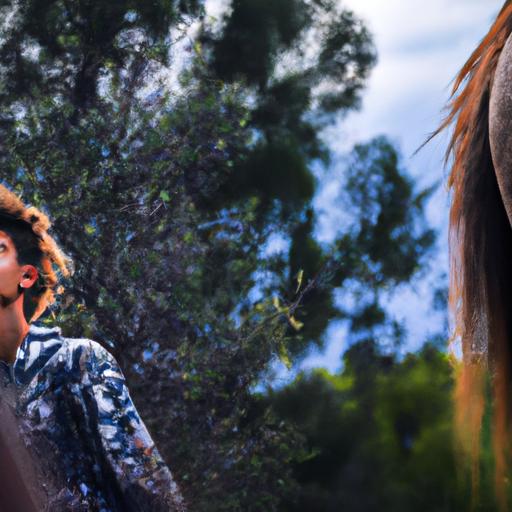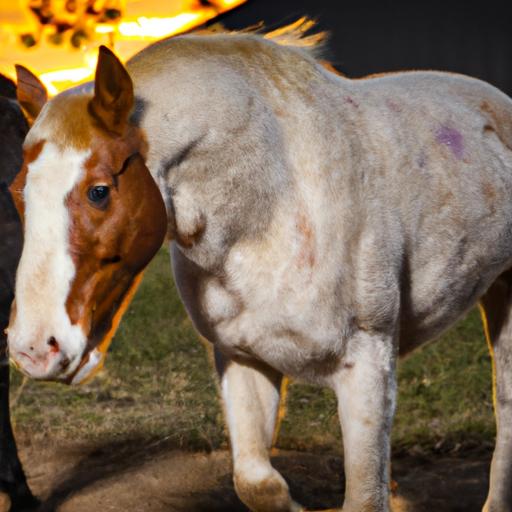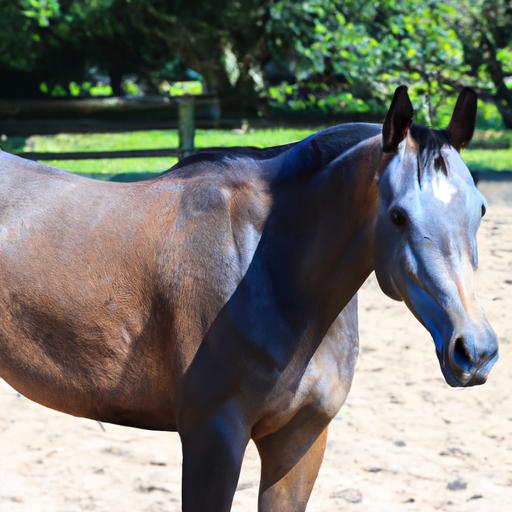Discover the captivating world of horse breeds and colors. Uncover the unique traits and mesmerizing coat variations that make each horse truly extraordinary.
Introduction

Horses, majestic creatures that have captivated humanity for centuries, come in a mesmerizing array of breeds and colors. Each breed possesses unique traits, while their colors add an enchanting touch to their individuality. Whether you are an avid equestrian or simply intrigued by these magnificent animals, understanding horse breeds and colors is essential to appreciating their diversity and unlocking their hidden secrets.
In various contexts, from horse racing to breeding programs, having knowledge about horse breeds and colors proves invaluable. It allows us to make informed decisions and better comprehend the characteristics and capabilities of these incredible creatures. Are you ready to embark on an exciting journey into the world of horse breeds and colors? Let’s dive in!
Horse breeds encompass a range of distinct characteristics, including size, temperament, and physical attributes. These traits are often the result of centuries of selective breeding, tailoring horses to fulfill specific purposes, such as racing, showjumping, or farm work. Understanding different breeds empowers us to choose the right horse for our intended activities and ensures a harmonious partnership between rider and horse.
Equally captivating are the colors adorning these magnificent creatures. From sleek blacks to fiery chestnuts, horses showcase a mesmerizing palette of coat colors. Each color, with its unique shades and patterns, adds a touch of individuality to every horse. Delving into the world of horse colors not only allows us to appreciate their aesthetic appeal but also provides insights into their genetics and potential health concerns.
In the next sections, we will take a closer look at various horse breeds, explore the captivating realm of horse colors, understand the connection between breeds and colors, and discover how these factors influence equestrian activities. So, join me as we unravel the secrets of horse breeds and colors, and embark on an unforgettable journey into equine diversity.
Horse Breeds: A Comprehensive Guide

Definition and Significance of Horse Breeds
Horse breeds are distinct groups of horses with shared characteristics, including physical attributes, temperament, and abilities. These breeds are the result of centuries of selective breeding, where humans have carefully chosen and bred horses with desired traits. The classification of horse breeds serves as a valuable tool in understanding and categorizing these magnificent animals, enabling us to identify their unique strengths and purposes.
Key Factors Contributing to the Classification of Horse Breeds
Several factors contribute to the classification of horse breeds. These include physical attributes such as height, body conformation, and bone structure, as well as specific characteristics like endurance, speed, or jumping ability. Additionally, the breed’s historical background, geographical origin, and intended use also play a significant role in determining its classification. Understanding these factors helps us appreciate the diversity within horse breeds and provides insights into their capabilities.
Popular Horse Breeds and Their Characteristics
The world of horse breeds boasts a wide array of popular and well-known breeds, each with its own distinct characteristics. The Arabian horse, renowned for its grace and endurance, captures the hearts of many with its dished face and arched neck. The Thoroughbred, famed for its speed and agility, dominates the race tracks with its sleek build and powerful hindquarters. Other notable breeds like the American Quarter Horse, versatile and athletic, excel in various disciplines such as cutting, reining, and ranch work.
Notable Examples of Horse Breeds from Around the World
Horse breeds can be found across the globe, each region showcasing its unique equine heritage. The Andalusian, originating from Spain, captivates with its elegant movements and noble appearance. The Friesian, hailing from the Netherlands, enchants with its long, flowing mane and tail, and its powerful yet graceful presence. The Icelandic horse, native to Iceland, stands out for its unique fifth gait, the tölt, and its ability to thrive in harsh environments.
Exploring these popular horse breeds and their remarkable characteristics offers a glimpse into the incredible diversity within the equine world. As we continue our journey, we will now shift our focus to another captivating aspect of horses: their mesmerizing coat colors.
Understanding Horse Colors

Horses, with their captivating array of coat colors, are a testament to nature’s artistic prowess. Understanding the significance of horse coat colors allows us to appreciate the beauty and uniqueness of each individual. Let’s delve into the fascinating world of horse colors and explore their significance.
Explanation of Horse Coat Colors and Their Significance
Horse coat colors encompass a wide spectrum, ranging from solid hues to intricate patterns. Each color carries its own meaning and symbolism, reflecting both genetic factors and environmental influences. The coat color not only adds aesthetic appeal but can also provide insights into a horse’s health and temperament. Whether it’s the stately elegance of a black coat or the vibrant energy of a bay, each color holds its own significance in the equine world.
Common Horse Coat Colors and Their Variations
Within the expansive realm of horse coat colors, several hues stand out as the most prevalent. Among them, the most common include bay, chestnut, black, and gray. Each of these colors exhibits variations and nuances, creating a stunning tapestry of diversity. For instance, chestnuts can range from a rich, fiery red to a lighter, golden hue. Understanding the variations within these colors allows us to appreciate the subtle differences and individuality of each horse.
Factors Influencing the Expression of Horse Coat Colors
The expression of horse coat colors is influenced by a variety of factors, including genetics and environmental conditions. Genes play a pivotal role in determining coat color inheritance, with specific alleles dictating the presence or absence of certain colors. Additionally, environmental factors, such as sunlight exposure and nutrition, can affect the intensity and shade of a horse’s coat color. By understanding these factors, we gain insight into the intricate mechanisms that shape the vibrant mosaic of horse coat colors.
Unusual or Rare Horse Coat Colors
While the common coat colors captivate our attention, there are also rare and unusual colors that add an element of intrigue to the equine world. From the striking palomino with its golden shimmer to the enchanting dappled grays, these rare coat colors are a testament to the wonders of nature. Exploring these unique colors not only sparks our curiosity but also highlights the extraordinary diversity present within the horse population.
Now that we have gained a deeper understanding of horse coat colors, let’s move forward to explore the fascinating connection between horse breeds and colors, unraveling the intricate tapestry that binds these two aspects of equine beauty.
The Connection Between Horse Breeds and Colors
Horse breeds and colors share a fascinating interconnectedness that goes beyond mere aesthetics. The coat colors of horses often hold significance within specific breeds, with certain colors being more prevalent or even preferred. Additionally, genetics play a pivotal role in determining the coat colors that manifest within different breeds. Let’s delve deeper into this captivating relationship.
How Horse Breeds and Colors are Interconnected
The connection between horse breeds and colors goes beyond superficial appearances. Different breeds often exhibit certain coat colors more frequently due to their genetic makeup. For instance, the majestic Arabian horse is renowned for its striking chestnut and bay colors. On the other hand, the gentle and versatile American Quarter Horse is commonly seen in a variety of hues, including sorrel, bay, and black. Understanding these breed-color associations allows us to identify and appreciate the unique characteristics of each breed.
Specific Breed Preferences for Certain Coat Colors
Within specific breeds, there are often preferences for particular coat colors. These preferences can be influenced by tradition, cultural significance, or practical considerations. For example, in the world of Thoroughbred racing, a horse’s coat color can hold symbolic value. Chestnut-colored horses, known as “reds,” are associated with strength and tenacity, while gray horses are often considered elegant and regal. These preferences add an extra layer of charm and mystique to the world of horse breeds.
Role of Genetics in Determining Horse Coat Colors within Breeds
Genetics play a crucial role in determining the coat colors that manifest within different horse breeds. The inheritance of coat color is a complex process influenced by multiple genes. From dominant colors like bay and black to dilutions like palomino and buckskin, the intricate interplay of genetic factors shapes the coat colors we see in horses. Understanding these genetic mechanisms can not only satisfy our curiosity but also aid in breeding programs and the selection of desired coat colors within specific breeds.
By exploring the connection between horse breeds and colors, we gain a deeper appreciation for the intricate tapestry of equine diversity. The interplay of genetics, breed preferences, and cultural significance provides a rich and fascinating narrative that enhances our understanding and admiration for these remarkable creatures. In the next section, we will discover the practical implications of horse breeds and colors in various equestrian activities.
Utilizing Horse Breeds and Colors in Equestrian Activities
Matching Horse Breeds and Colors to Specific Equestrian Disciplines
In the equestrian world, the right combination of horse breed and color can make a significant difference in various disciplines. Different breeds possess innate qualities that make them excel in specific activities. For instance, the agile and nimble Arabian breed often shines in endurance riding, while the powerful and majestic Friesian breed is favored in dressage competitions. When choosing a horse for a particular discipline, understanding the breed’s strengths and abilities is crucial for achieving success.
Moreover, considering the coat color of a horse can also play a role in certain equestrian disciplines. In disciplines where the horse’s appearance contributes to its overall performance, such as halter classes in horse shows, specific coat colors may be preferred. A striking coat color can catch the judge’s eye and enhance the overall presentation of the horse, potentially influencing the outcome of the competition.
How Certain Horse Breeds Excel in Different Activities
Each horse breed has evolved to meet specific demands, resulting in their unique abilities and talents. For instance, Thoroughbreds, renowned for their speed and stamina, dominate the world of horse racing. Their lean bodies, long legs, and powerful musculature propel them to astonishing speeds, leaving their competitors in the dust.
On the other hand, breeds like the Quarter Horse excel in activities that require bursts of speed, agility, and versatility, such as barrel racing and reining. Their compact build and strong hindquarters allow them to make quick turns and rapid accelerations, making them formidable competitors in these disciplines. Understanding the strengths and aptitudes of different breeds enables riders to select the ideal partner for their chosen activity.
Utilizing Horse Coat Colors as a Marketing or Aesthetic Strategy
In addition to breed-specific advantages, horse coat colors can play a significant role in marketing and aesthetics. Certain coat colors, such as flashy pintos or rare dilute colors like palomino and buckskin, often attract attention and create visual appeal. Breeders and trainers may strategically use these captivating coat colors to draw potential buyers or garner attention in horse shows and exhibitions.
Furthermore, in industries such as film and entertainment, horses with unique coat colors may be sought after for their ability to stand out on the screen or create a specific visual ambiance. The striking contrast of a black horse against a snowy backdrop or the elegance of a dappled gray horse can add depth and allure to cinematic productions.
By leveraging horse breeds and colors in equestrian activities, riders and owners can maximize their chances of success while also creating a visually captivating experience. Whether it’s matching the right breed to a specific discipline or utilizing eye-catching coat colors for marketing purposes, understanding the impact of breeds and colors in equestrian pursuits is a valuable asset in the horse world.


